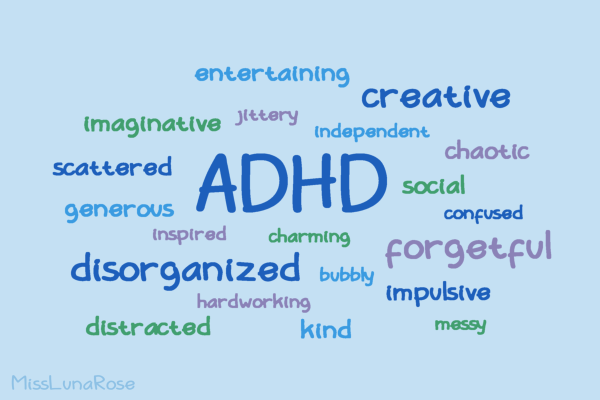Policy Changes Are the Key to Raising U.S. Life Expectancy
In 2022, officials from the Centers for Disease Control and Prevention (CDC) released new figures regarding life expectancy at birth in the United States, stating that the average life expectancy had dropped for the second consecutive year, resulting in the lowest life expectancy since 1996. Life expectancy at birth predicts the number of years that a newborn can expect to live based on current adult death rates. Average life expectancy at birth dropped globally in 2020 due to the amount of COVID-19-related deaths, but many countries bounced back in 2021. The United States, however, reported a 1.8 year decrease in 2020 and a 0.6 year decrease in 2021, resulting in a sharp decline of almost two and a half years since 2019. This is the steepest decrease in U.S. life expectancy in nearly a century.
Researchers attribute about 60% of the 2021 decrease to COVID-19 deaths, despite the introduction of the COVID-19 vaccine. Data also indicates that the growing opioid crisis has played a role in the steep life expectancy decrease. In 2021 alone, over 100,000 people died as a result of drug overdose, a 15% increase since 2020. Many people suffering from drug addiction cannot afford quality healthcare or rehabilitation services, which contributes to the ongoing drug abuse crisis America is facing.
There has also been a sharp increase in childhood mortality rates. Between 2019 and 2021, childhood mortality increased by 20% with firearm-related deaths as the leading cause of death between the ages of one and 19. Gun violence also disproportionately affects minority groups and people suffering from poverty, as researchers estimate that Black children and teens are 17 times more likely to die by gun homicide than their white peers.
Minority groups face higher mortality rates across the board. The average life expectancy for Black Americans is 70.8 years, compared to the average of 76.4 years for white Americans.In addition, Native Americans have fared far worse with an average life expectancy of a whopping 65.2 years in 2021, and poor socioeconomic status and subsequent lack of access to healthcare seems to be the root cause. In 2021, data indicates that only 6% of Asian Americans and 7% of white Americans did not have health insurance compared to 19% of Hispanic Americans and 21% of Native Americans.
While minority groups were impacted more heavily, life expectancy decreased significantly in all U.S. racial and ethnic groups from 2019 to 2021. The nearly 2.5 year decrease has raised alarm among many Americans, but a comparatively low life expectancy is not a new issue in the United States. Since 1980, American life expectancy has been significantly lower than comparable countries such as Japan, which had an average life expectancy of 78.53 years in 1985-1990, almost four years longer than America’s 74.9 for the same period and two years longer than life expectancy for Americans in 2021.
An increase in childhood deaths, rising gun violence and COVID-19 cannot account for a comparatively lower life expectancy in the ’80s. Lack of adequate health care seriously diminishes life expectancy, especially among low-income individuals. Additionally, the typical American diet and lifestyle contributes to premature deaths due to heart disease. Also, the Food and Drug Administration (FDA) has also come under fire in recent years for approving foods and chemicals which have been banned in other countries. Scientists have found that some of these chemicals, called obesogens, have been linked to adult obesity and may increase an individual’s likelihood to get heart disease, type 2 diabetes or grow cancer. The combination of poor food options and an expensive, and often exclusive, healthcare system has historically had a major impact on American life expectancy, but many of these problems have been amplified in recent years as the healthcare gap between upper and lower class citizens continues to grow.
Increasing American mortality rates are caused by a myriad of factors. So what can we do to counter these concerning trends? Changing the pro-gun culture and eating habits of many Americans is a daunting task. Legislators, especially state and local politicians, need to fight for the health of their constituents. In some states, this may mean an increase in firearm control and regulation. States should consider implementing laws that require all stored guns to be locked when not in use in order to keep them out of the hands of children. Massachusetts already has a law to this effect, and since its implementation has had a decrease in childhood suicide by gun.
The healthcare side of the issue is even more critical to improving the life expectancy and quality of life of Americans. In 2021, there were 27.5 million non-elderly adults that don’t receive health insurance. Privatized health insurance has caused medical prices to rise drastically for uninsured individuals, as inflated medical prices help to fund the health insurance industry. Paying out of pocket for medication or medical care is not an option for many of these 27.5 million people. Revamping the American healthcare system is the biggest obstacle to increasing the nation’s life expectancy. While socialized medicine may never be positively received by the American citizens, particularly conservative citizens and legislators, even a small increase in access for low-income individuals could vastly improve the quality and longevity of American life.
In this case, policy change is critical to American progress. It is important for legislators should consider the life expectancy of countries with similar economies to the United States and take into account what those countries do to protect the health of their citizens. Legislators should look for inspiration from policy changes in other nations, and work to adapt these laws to fit American needs and ideals which could make all the difference for the millions of Americans struggling to fight heart disease, cancer, gun violence and mental illness on their own.
Allison Schneider, FCRH ’26, is an English and political science major from Indianapolis, Ind.

Allison Schneider is a junior from New Palestine, Indiana, majoring in English with a concentration in creative writing and a minor in political science....










































































































































































































